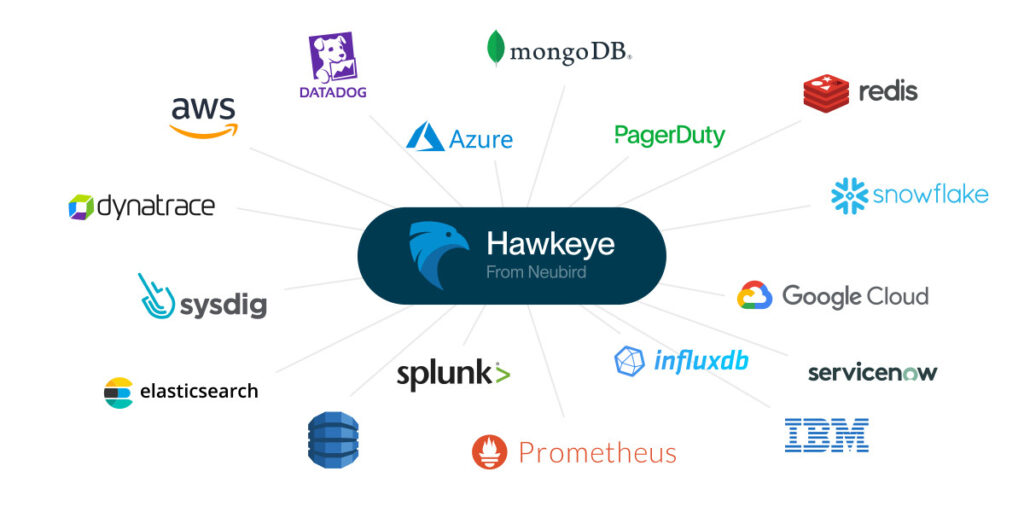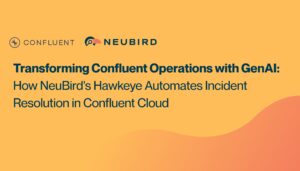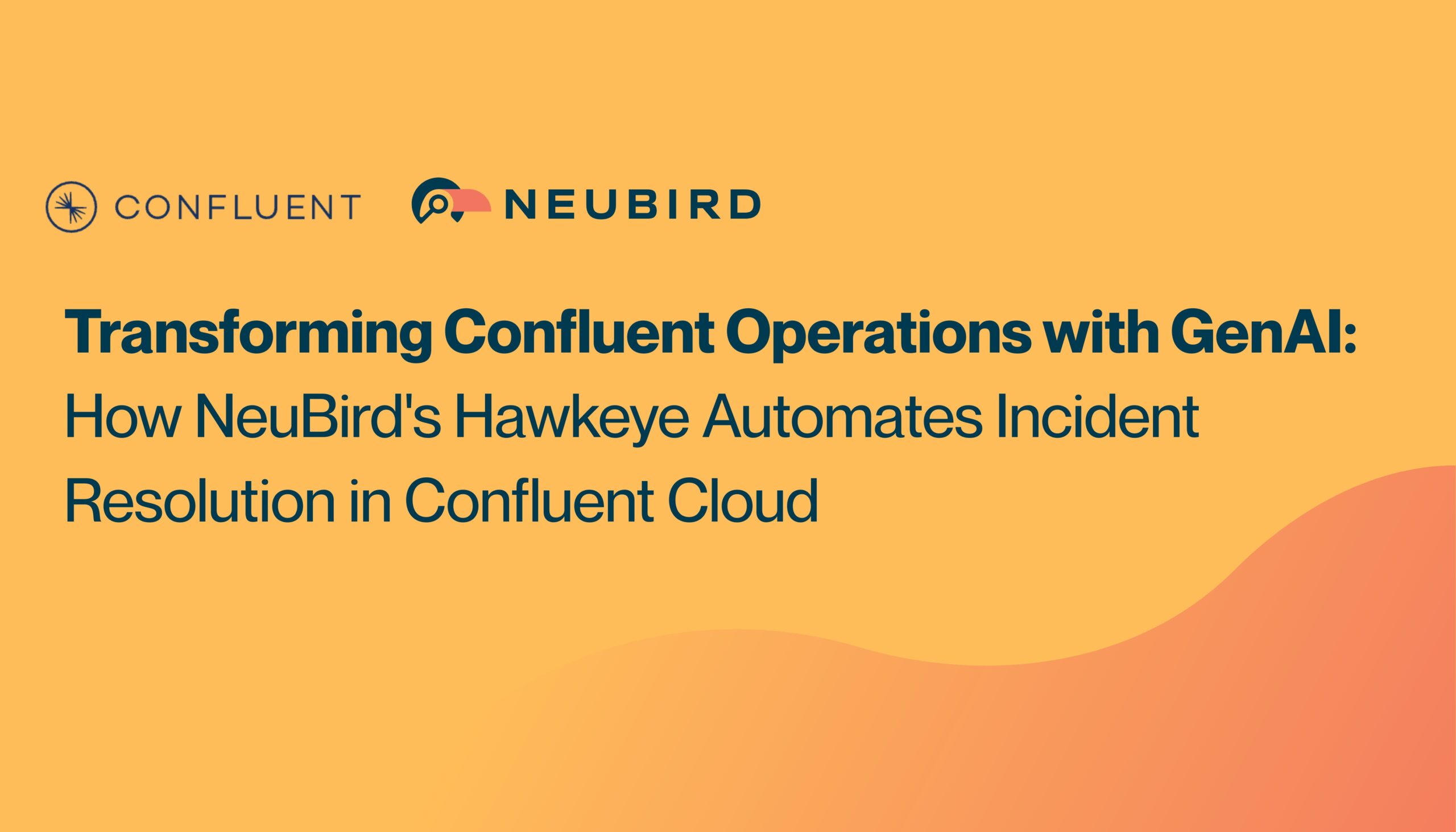Use GenAI to Power Your Datadog and ServiceNow Integration and Workflows for Faster Incident Resolution
SRE teams are constantly battling against time when it comes to incident resolution. Every minute of downtime can translate to significant financial losses and reputational damage.
The numbers tell a striking story: SRE teams today spend up to 70% of their time investigating and responding to incidents, leaving precious little bandwidth for innovation and systemic improvements. In a world where system complexity grows exponentially, this reactive approach isn’t just unsustainable—it’s holding organizations back from their true potential.
This reality exists despite having powerful tools like Datadog and ServiceNow at our disposal. These platforms represent the pinnacle of modern observability and incident management, yet teams still struggle to keep pace with increasing demand. The challenge isn’t with the tools themselves—it’s with how we use them. To make things worse, most organizations have more than one observability tool, so SRE teams rarely have all the info they need in one place.
The Challenge of Fragmented Observability
While Datadog and ServiceNow are powerful tools individually, many organizations face challenges in integrating them effectively. Often, different teams prefer different tools, leading to a fragmented observability landscape. Application metrics might reside in Datadog, while infrastructure logs are sent to CloudWatch, and security events are tracked in another platform. This forces engineers to use multiple interfaces, manually connect data, and waste time piecing together an incident.
The results are:
- Data sources that don’t connect because different teams use different observability tools.
- Manually merging data from Datadog with incident details in ServiceNow slows down incident response.
- Missing key context, making it hard to find the root cause.
The Standard Integration Methods: Common Datadog & ServiceNow Approaches
The usual ways to connect ServiceNow to Datadog involve webhooks and RESTful APIs, along with using integration platforms for automation.
Datadog API ServiceNow Integration
ServiceNow’s REST API can be used to create, update, or query records based on data from Datadog. This method often requires scripting to parse incoming payloads and map fields appropriately.
Webhooks and Alerting Rules
Datadog can send real-time notifications to ServiceNow when specific events or alerts are triggered. This involves configuring a webhook in Datadog to send alerts to ServiceNow and creating an inbound REST message in ServiceNow to receive and process these alerts.
Service Graph Connector for CMDB Enrichment
Datadog can enrich logs and events with data from ServiceNow’s Configuration Management Database using the Service Graph Connector.
Host and Service Tagging via CMDB Queries
Datadog tags can be synchronized with ServiceNow CMDB data to maintain consistency and provide context for incident management.
Third-Party Integration Platforms
Third-party platforms facilitate Datadog-ServiceNow integration with pre-built connectors and no-code/low-code workflows. Yet these integration do not fully capture the nuances of your unique environment.
Hitting the Limits: Challenges with Conventional ServiceNow Datadog Integrations
Even with standard integrations in place, organizations run into issues.
Manual Context Gathering
Basic alerts or incidents lack full context, forcing SREs to log into multiple systems to get the whole picture.
Static and Rigid Workflows
Fixed rules can’t handle dynamic environments, leading to misrouted incidents or slow responses.
Insufficient Incident Details
Auto-created tickets might miss key metadata, like recent changes or connections.
Alert Fatigue
Too many alerts without smart filtering lead to noise, pulling attention from high-priority incidents.
Maintenance Overhead
Custom integrations often require constant updates to accommodate evolving IT landscapes.
Meet Hawkeye: Bridging the Gap with Generative AI for Datadog ServiceNow Integration
Hawkeye acts as an intelligent bridge between Datadog and ServiceNow, leveraging the power of Generative AI to automate tasks, enhance insights, and streamline workflows. Here’s how Hawkeye transforms the way SREs work with Datadog ServiceNow integration:
Automated Data Correlation
Hawkeye automatically correlates data from Datadog and ServiceNow, eliminating the need for manual cross-referencing. For example, when an alert is triggered in Datadog, Hawkeye can automatically create an incident in ServiceNow, populate it with relevant context from Datadog, and assign it to the appropriate team.
This multi-tool correlation happens in seconds, not the minutes or hours it would take a human engineer to manually gather and analyze data from each platform. More importantly, Hawkeye learns the relationships between different data sources, understanding which tools typically provide the most relevant information for specific types of incidents.
Intelligent Alerting
Hawkeye analyzes historical incident data and learns to identify patterns and anomalies. This allows it to filter out noise and prioritize alerts based on severity and context, reducing alert fatigue and ensuring that critical issues are addressed promptly. This is particularly valuable in a Datadog ServiceNow integration, where a high volume of alerts can easily overwhelm SRE teams.
Root Cause Analysis
Hawkeye goes beyond simply correlating data by performing automated root cause analysis. By analyzing metrics, logs, and traces from Datadog, combined with incident data from ServiceNow, Hawkeye can pinpoint the root cause of an issue, accelerating resolution times. This capability is crucial for efficient Datadog ServiceNow event management.
Read more: From reactive to proactive Commvault backup workflows
Automated Remediation
For common incidents, Hawkeye can automatically trigger remediation actions, such as restarting services or scaling resources. This minimizes downtime and frees up SREs to focus on more complex issues. This automation capability further enhances the value of Datadog ServiceNow integration.
Read more: Go beyond reactive Datadog PagerDuty workflows and integration
Transforming Datadog and ServiceNow Incident Management and Response Workflow
Let’s consider a scenario where a critical application experiences a sudden spike in latency. In a traditional workflow, an SRE would need to:
- Receive an alert from Datadog.
- Log in to Datadog to investigate the issue.
- Manually correlate metrics, logs, and traces to identify the root cause.
- Create an incident in ServiceNow.
- Update the incident with findings from Datadog.
- Assign the incident to the appropriate team.
With Hawkeye, this process is streamlined and automated:
- Hawkeye receives the alert from Datadog.
- Hawkeye automatically correlates the alert with relevant data in Datadog and ServiceNow.
- Hawkeye performs root cause analysis and identifies the source of the latency.
- Hawkeye creates an incident in ServiceNow, populates it with relevant context, and assigns it to the appropriate team.
- If the issue is common, Hawkeye may even trigger automated remediation actions.
Benefits of Datadog ServiceNow Integration with Hawkeye
Using Hawkeye does more than just improve incident response times. By automating tasks and giving insights, Hawkeye helps SREs to:
Reduce alert fatigue. By filtering out noise and prioritizing alerts, Hawkeye helps SREs focus on the most critical issues.
Accelerate incident resolution. Automated data correlation and root cause analysis help SREs resolve incidents faster.
Improve system stability. Predictive insights and automated remediation help prevent incidents and maintain system uptime.
Increase efficiency. Automation frees up SREs from tedious manual tasks, allowing them to focus on more strategic work.
Enhance collaboration. By providing a centralized platform for incident management and data analysis, Hawkeye improves collaboration between teams.
Unlocking Actionable Insights with Effective AI Prompting
“Talking” to an AI SRE teammate like Hawkeye requires asking and prompting the right questions. In a ServiceNow environment, consider AI prompts that help you understand the system’s pulse:
You might prompt GenAI “Which incidents are nearing their SLA breach time?” or “How many high-priority incidents are open in the last 24 hours?”. Similarly, for your ServiceNow change and release management, think about the impact of scheduled changes or the frequency of emergency modifications, all of which are crucial for maintaining service stability. Learn more in our ServiceNow prompting guide.
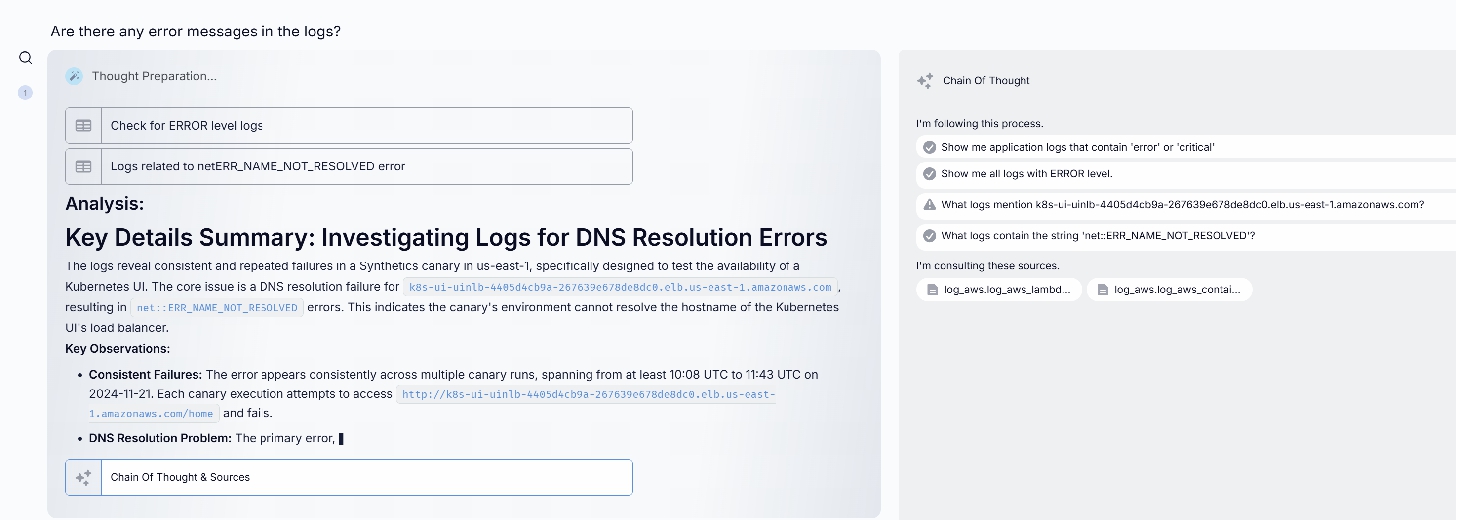
On the Datadog side, the focus shifts to real-time monitoring. Prompts like “What are the most frequent errors in my application logs?” or “What are the most common alerts in my environment?” give you a closer look at your traces to find bottlenecks. Learn more in our Datadog prompting guide.
How to Begin
Implementing Hawkeye alongside your existing tools is a straightforward process that begins paying dividends immediately. While this blog focuses on Datadog and ServiceNow, Hawkeye’s integration capabilities mean you can connect it to your entire observability stack, creating a unified intelligence layer across all your tools.
Read more: Using ServiceNow?
- See how you can enhance your Splunk and ServiceNow integration
- or power-up your AWS CloudWatch and ServiceNow SRE workflows
Take the Next Step
Adding Hawkeye into your observability stack is easy:
- Set up read-only connections to Datadog and ServiceNow.
- Start a project within Hawkeye, linking your data sources.
- Start interactive investigations, using real-time insights.
Ready to experience the power of GenAI for your incident management workflows? Check our demo or contact us to see how Hawkeye can become your team’s AI-powered SRE teammate.
FAQs
What is Datadog?
Datadog is a cloud-based monitoring and analytics platform that provides organizations with real-time visibility into their IT infrastructure. It enables the monitoring of servers, databases, applications, and cloud services, offering insights into performance and potential issues. Datadog excels at collecting, searching, and analyzing traces across distributed architectures, which is crucial for maintaining system health and efficiency. It offers a wide range of capabilities, including application performance monitoring (APM), cloud and on-premise monitoring, and over 200 vendor-supported integrations. Learn more.
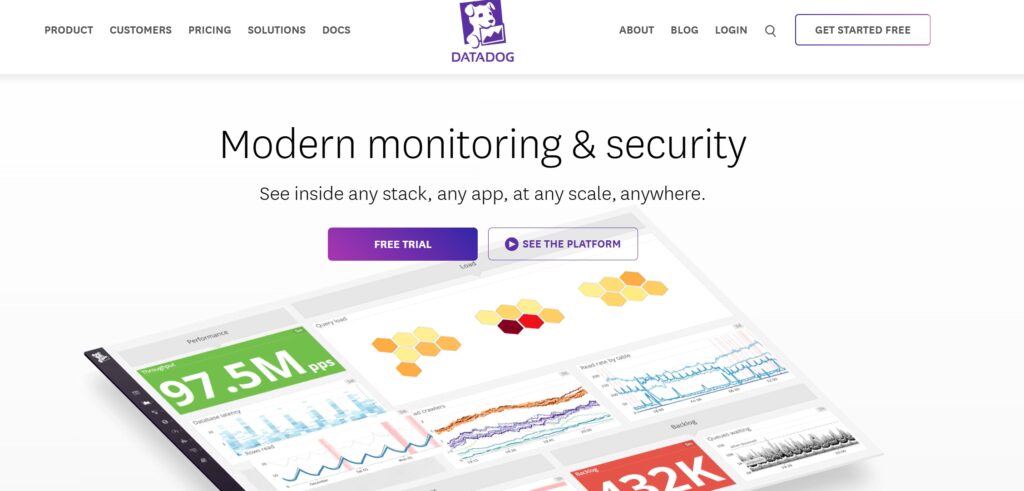
What is ServiceNow?
ServiceNow is a cloud-based platform that streamlines workflows across various departments within an organization. It specializes in IT service management (ITSM), IT operations management (ITOM), and IT business management (ITBM). ServiceNow excels at automating tasks, managing incidents, and tracking progress against service level agreements (SLAs). It provides a centralized system for managing IT operations, enabling efficient incident response and resolution. Learn more.
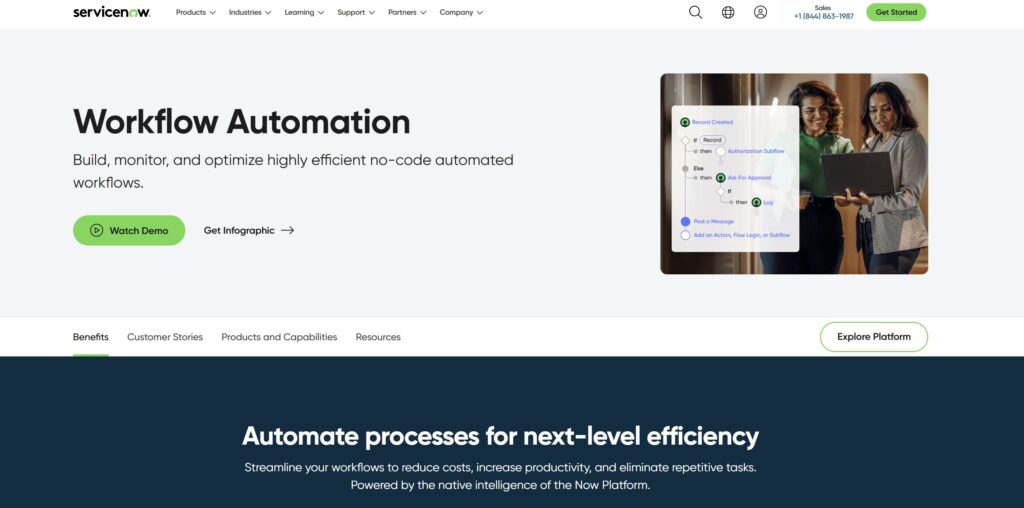
What is the difference between Datadog and ServiceNow? Should I use Datadog vs ServiceNow?
Rather than choosing one over the other, many organizations integrate both tools. This integration enables you to leverage Datadog’s robust observability to detect issues and ServiceNow’s structured processes to manage and resolve incidents.
Datadog is primarily a cloud-based monitoring and analytics platform designed to provide real-time visibility into your infrastructure, applications, and logs. It excels at collecting metrics, analyzing performance, and detecting anomalies across complex, distributed systems.
On the other hand, ServiceNow is a cloud-based IT service management (ITSM) platform focused on streamlining workflows, incident management, and change tracking. It automates the process of creating, categorizing, and managing incidents, ensuring that issues are tracked and resolved efficiently.
Written by

